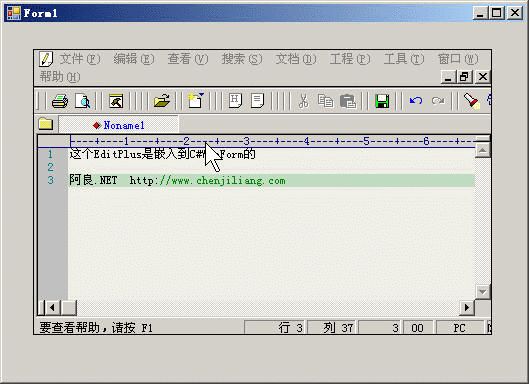- NextJs - 服务端组件如何拿到当前页面的URL或者参数
Zong_0915
javascript前端开发语言NextJs
NextJs-服务端组件如何拿到当前页面的URL或者参数前言一.NextJs如何拿到当前页面URL二.NextJs拿URL参数的两种方式前言NextJs中,如果你是服务端组件,并且是App路由模式,如果想拿到当前URL,我们只能通过中间件获取,并通过header来实现交互。想再学习下中间件的可以参考我的这篇文章:NextJs初级篇-安装|路由|中间件一.NextJs如何拿到当前页面URL我们编写根
- 库函数的模拟实现(memset、memcmp)
扶我起来我还能再做一题
c语言开发语言
一、memset函数说明还是贴上cplusplus的网址!函数总结:功能:memset函数将指定的值填充到内存块中。这个值被解释为无符号字符(unsignedchar),并且连续地设置内存块的前num个字节。参数:ptr:指向要填充的内存块的指针。value:要设置的值。虽然这个值以int类型传递,但实际填充时会将其转换为无符号字符。num:要设置的字节数,使用size_t类型,这是一个无符号整型
- 移除元素OJ详解
扶我起来我还能再做一题
开发语言数据结构c语言leetcode
一、题目介绍给你一个数组nums和一个值val,你需要原地移除所有数值等于val的元素。元素的顺序可能发生改变。然后返回nums中与val不同的元素的数量。假设nums中不等于val的元素数量为k,要通过此题,您需要执行以下操作:更改nums数组,使nums的前k个元素包含不等于val的元素。nums的其余元素和nums的大小并不重要。返回k。用户评测:评测机将使用以下代码测试您的解决方案:int
- 基于DSP+FPGA高速运动控制器设计
深圳信迈科技DSP+ARM+FPGA
运动控制器国产ARM+FPGAfpga开发运动控制器
基于“PC+运动控制器”结构的开放式机器人运动控制系统能够充分利用PC开放程度高、通用性好、处理能力强等特点以及运动控制器运算速度快、实时性能好、控制能力强等特点,因此得到较快发展,成为目前的研究热点。但目前采用此种结构的开放式机器人运动控制系统中,不管是控制器供应商所提供的运动控制器或者是科研人员自主设计的运动控制器,在通用性、软硬件可重构方面都存在一些问题,影响着机器人运动控制系统的开放性。因
- 【离散数学】关系闭包运算的性质
彭彭不吃虫子
机器学习人工智能
关系闭包运算是关系代数中的一个重要概念,它用于通过一系列运算来生成一个关系的闭包,即包含原关系的所有可能的“扩展”形式。关系闭包主要有三种类型:传递闭包、对称闭包和自反闭包。每种闭包运算都有一些性质,我们将逐个分析这些性质,并通过详细的例子和图形来加以说明。1.传递闭包(TransitiveClosure)定义:传递闭包是给定一个关系RR和一集合AA,通过不断加入能通过已有关系到达的元素来构建最小
- 【Python】super() 函数和 MRO 顺序的实例剖析
彭彭不吃虫子
python开发语言
1.构造函数(__init__(self[,...]))在类中定义__init__()方法,可以实现在实例化对象的时候进行个性化定制:>>>classC:... def__init__(self,x,y):... self.x=x... self.y=y... defadd(self):... returnself.x+self.y... defmu
- 【Python】类与对象:self在其中的作用,面向对象的优势,函数和方法的区别
彭彭不吃虫子
python开发语言
1.self在类和对象中的功能与用处在面向对象编程(OOP)中,self是类中方法的第一个参数,它指向当前实例(对象)。每个类的方法第一个参数通常是self,它用于引用当前对象本身,这使得我们能够访问类中的属性和其他方法。功能与用处:访问实例属性:self允许在类的方法中引用对象的属性。例如,如果类中有一个实例属性name,你可以通过self.name来访问它。修改实例属性:通过self,方法可以
- 深入理解C语言函数:定义、调用与设计
Threeiy
c语言
在C语言编程的世界里,函数是构建复杂程序的基石。它允许我们将一个大的任务分解为多个小的、功能独立的模块,使得代码更易于理解、维护和复用。今天,我们就来深入探讨一下C语言函数的方方面面。一、函数定义的一般形式函数定义由函数头和函数体两部分组成。//返回值类型类型标识符函数名(形式参数)//函数头head{//函数体--body声明部分语句部分}-函数头:-类型标识符:用于指定函数处理完后要带出的结果
- Python在WRF模型自动化运行及前后处理中实践技术应用-包括数据处理、模型运行、结果可视化等步骤。
KY_chenzhao
python自动化开发语言
1.背景与目标WRF(WeatherResearchandForecasting)模型是中尺度气象数值模式的佼佼者,广泛应用于气象预报和气候研究。Python在WRF模型中的应用主要体现在前后处理、自动化运行和数据可视化等方面。本文将以风速预测为例,详细说明Python在WRF模型中的具体应用,包括数据处理、模型运行、结果可视化等步骤。2.数据准备数据来源包括WRF模型的输出数据和实际观测数据。这
- PySide6 GUI 学习笔记——Python文件编译打包
Humbunklung
PySide6学习笔记python
前面编写的软件工具都必须运行在Python环境中,且通过命令行的方式运行,通过Python打包工具,我们可以把.py文件封装成对应平台的运行文件,供用户执行。常见Python打包工具工具简介官网/文档地址py2exe将Python脚本转换为Windows可执行文件https://www.py2exe.orgcx_Freeze跨平台的Python打包工具,它可以将Python脚本打包为可执行文件或动
- 对超短脉冲的色散效应的研究
Bonnie1985119
hololens人工智能matlabpython算法
在现代光学系统中,超快现象经常被应用于各种各样的场合。由于这种短脉冲的光谱带宽很大,色散效应在这些系统的设计和分析中起着重要作用。因此,为了确保准确和合适的建模,系统中的所有色散效应都必须得到充分考虑。为了强调快速物理光学软件VirtualLabFusion在这个特定光学领域的能力,我们展示了两个例子。在第一个例子中,我们研究了一个脉冲在不同材料中传播时的行为,并说明了相应的色散相关效应。我们还用
- 构建一个查询分析系统
AWsggdrg
数据库python
技术背景介绍在构建一个查询分析系统时,需要能够加载文档、使用聊天模型、生成嵌入、创建向量存储并执行检索。这些过程的目标是将用户输入的查询优化,以实现更为精准的检索结果。本文将通过一个端到端的示例展示如何使用查询分析提升检索结果的相关性。我们将着眼于如何对LangChain的YouTube视频进行检索,并通过查询分析解决原始用户问题直接传递给搜索引擎时可能出现的失败模式。核心原理解析查询分析的核心在
- MDX语言的编程范式
BinaryBardC
包罗万象golang开发语言后端
MDX语言的编程范式引言MDX(MultidimensionalExpressions)是一种查询语言,主要用于在多维数据集中检索数据。这种语言广泛应用于商业智能(BI)领域,尤其是在与分析服务(如MicrosoftAnalysisServices)相关的上下文中。MDX语言提供了一个强大的语法,使得开发者能够以灵活的方式操作多维数据模型。本文将深入探讨MDX的编程范式,从基本语法、查询结构到高级
- MDX语言的数据类型
BinaryBardC
包罗万象golang开发语言后端
MDX语言的数据类型详解引言MDX(多维表达式)是一种用于查询和操作多维数据集的查询语言,广泛用于数据分析和商业智能领域。MDX语言的设计旨在帮助用户高效地从多维数据库(如MicrosoftSQLServerAnalysisServices)中提取和分析数据。随着数据量的不断增加和数据结构的日益复杂,MDX提供了一种强大的方式来处理和分析这些多维数据。在MDX中,数据类型是理解和使用该语言的基础,
- R语言的软件工程
BinaryBardC
包罗万象golang开发语言后端
R语言的软件工程1.引言随着数据科学的快速发展,R语言作为一种统计计算和图形绘制的编程语言,其在数据分析、可视化以及机器学习等领域的应用日益广泛。尽管R语言在数据处理上有其独特的优势,但要将其运用于大型项目和商业应用中,就需要遵循软件工程的原则。本篇文章将探讨R语言在软件工程中的应用,主要涵盖软件开发生命周期、代码规范、版本控制、测试和文档等方面。2.软件开发生命周期软件开发生命周期(SDLC)是
- 通信协议—WebSocket
啥也学不会a
websocket网络协议网络c#服务器
一、WebSocket编程概念1.1什么是WebSocketWebSocket是一种全双工通信协议,允许在客户端(通常是浏览器)和服务器之间建立持久连接,以实现实时的双向通信。它是HTML5标准的一部分,相比传统的HTTP请求,WebSocket提供了更低的延迟和更高的性能,特别适合于需要实时更新数据的应用程序,如在线聊天、实时监控、游戏等1.2WebSocket的基本使用步骤1.2.1)服务器端
- AI时代:前端工程师和数学家真的要失业了吗?
前端
ExaCEO威廉·布里克近日发布的惊人预测在科技界引发轩然大波:他认为前端工程师将在三年内消失,而数学家则只有700天的时间。这一预测并非危言耸听,它反映了AI代码生成器等AI技术高速发展带来的巨大行业冲击。本文将深入探讨AI技术对前端开发和数学领域的影响,以及由此带来的机遇与挑战。前端开发行业的AI革命布里克的预测并非空穴来风。近年来,众多AI写代码工具如雨后春笋般涌现,例如ScriptEcho
- ChatGPT Canvas:开启AI编程新纪元——你的AI代码生成器来了!
前端
OpenAI近日宣布ChatGPTCanvas全面开放,并带来了两项重磅更新:直接运行Python代码和整合GPTs生态系统。这意味着,即使你不是专业的程序员,也能轻松体验编程的乐趣,并利用AI的力量创造出更多可能性。这对于想要学习编程或提高工作效率的用户来说,无疑是一个巨大的福音。这篇文章将深入探讨这两项更新,并展望ChatGPTCanvas的未来发展。直接运行Python代码:降低编程门槛,释
- AI 2025:技术飞跃与应用鸿沟——AI代码生成器引领未来?
前端
2024年,人工智能技术经历了前所未有的飞跃。大型语言模型(LLM)的能力显著提升,成本大幅下降,多模态应用成为主流。然而,令人担忧的是,技术进步与实际应用普及之间存在着巨大的鸿沟。“智能体”等概念被热炒,但实际应用却远未达到预期。本文将探讨这种技术进步与应用普及之间的矛盾,并分析弥合鸿沟的关键所在。技术的突飞猛进2024年,AI技术在多个方面取得了突破性进展。首先,模型能力得到了显著提升。GPT
- BOE(京东方)联手故宫再度打造沉浸式数字展 引领数字艺术文化新篇章
人工智能
2025年1月6日,由BOE(京东方)联合故宫博物院及腾讯主办的“‘纹’以载道——故宫沉浸式数字体验展”在苏州湾数字艺术馆盛大启幕,1月7日将正式开展。值此故宫博物院建院百年开年之际,BOE(京东方)凭借前沿数字技术,将故宫的瑰丽“国宝”以全新数字化形式串联起来,让故宫文化在苏州湾重焕生机。此次展览是BOE(京东方)与故宫博物院战略合作成果的又一力作,展现了BOE(京东方)在技术赋能文化传承方面的
- 软件架构的康威定律:AI如何重构团队协作模式
前端
1.引言康威定律,一个简洁却深刻的观察:任何组织设计出的系统,其结构都与组织自身的沟通结构保持一致。这意味着,一个团队的沟通方式、组织结构直接影响着最终产品的架构。这在软件开发领域尤为明显。一个沟通效率低下的团队,往往会设计出复杂、难以维护的软件系统。而近年来,人工智能技术的飞速发展为解决这一问题提供了一种新的途径。本文将探讨AI工具,特别是AI辅助代码生成工具,如何帮助团队克服康威定律的限制,重
- 华为OD机试E卷 --数大雁--24年OD统一考试(Java & JS & Python & C & C++)
飞码创造者
最新华为OD机试题库2024华为odjavajavascriptpythonjsc语言
文章目录题目描述输入描述输出描述用例题目解析JS算法源码Java算法源码python算法源码c算法源码题目描述一群大雁往南飞,给定一个字符串记录地面上的游客听到的大雁叫声,请给出叫声最少由几只大雁发出。具体:1.大雁发出的完整叫声为”quack“,因为有多只大雁同一时间嘎嘎作响,所以字符串中可能会混合多个”quack”2.大雁会依次完整发出”quack”,即字符串中’q,u,a,c,k这5个字母按
- Python中的Pipeline快速教学、
Coding Is Fun
python开发语言
在Python中,Pipeline通常指的是机器学习工作流中的流水线,尤其是在使用scikit-learn库时。Pipeline允许你将多个数据处理步骤和模型训练步骤串联起来,形成一个有序的工作流程。这不仅使代码更简洁,还能确保在训练和预测时一致的数据处理。以下是一个快速教学,帮助你掌握Python中Pipeline的核心概念和使用方法。目录安装和导入必要的库Pipeline的基本概念创建一个简单
- 简单谈谈日志审计系统和堡垒机的区别
服务器安全
日志审计系统和堡垒机有什么区别呢?日志审计系统和堡垒机是两种常见的安全工具,用于加强企业信息系统的安全性。尽管两者都有助于提高安全性,但它们在功能和应用方面有着显著的区别。日志审计系统和堡垒机有什么区别?1.什么是日志审计系统日志审计系统是一种集中管理和分析日志数据的工具。它能够自动收集来自不同设备和应用程序的日志信息,并对其进行存储和分析。通过日志审计系统,管理员能够实时监控系统的活动,并识别潜
- Python 操作二进制文件
昱晏
Python1024程序员节python
在计算机中,文件可以分为两种类型:文本文件和二进制文件。文本文件包含人类可读的字符,而二进制文件包含计算机指令或数据,无法直接阅读。常见的二进制文件包括图片、音频、视频、可执行文件等。Python提供了处理二进制文件的工具,允许你读写任意类型的数据。1以二进制模式打开文件在Python中,操作二进制文件时,需要使用'b'作为文件模式的一部分。常见的二进制文件模式有:'rb':以二进制读取文件。'w
- 第9章:Python TDD解决货币对象相等性比较难题
Tester_孙大壮
测试驱动开发python驱动开发开发语言
写在前面这本书是我们老板推荐过的,我在《价值心法》的推荐书单里也看到了它。用了一段时间Cursor软件后,我突然思考,对于测试开发工程师来说,什么才更有价值呢?如何让AI工具更好地辅助自己写代码,或许优质的单元测试是一个切入点。就我个人而言,这本书确实很有帮助。第一次读的时候,很多细节我都不太懂,但将书中内容应用到工作中后,我受益匪浅。比如面对一些让人抓狂的代码设计时,书里的方法能让我逐步深入理解
- tplink rt406路由器如何配置端口映射
hunter206206
网络智能路由器网络
配置TP-LinkRT406路由器的端口映射(端口转发)步骤如下:1.登录路由器管理界面打开浏览器,输入默认IP地址192.168.1.1,按回车。输入用户名和密码(默认均为admin),点击“登录”。2.进入端口转发设置登录后,点击左侧菜单的“转发规则”。选择“虚拟服务器”。3.添加端口映射规则在“虚拟服务器”页面,点击“添加新条目”。填写以下信息:服务端口号:外部访问的端口号(如8080)。I
- Python input 怎么使用
彭彭不吃虫子
windows数据库服务器
一、input()函数简介Python的input()函数是一个内置函数,用于从用户接收输入。当程序运行到input()函数时,会暂停并等待用户输入一些文本,用户输入的文本将作为函数的返回值。这使得我们可以在程序中获取用户的输入,以便根据输入执行相应的操作。二、input()函数语法input()函数的基本语法如下:input(prompt=None)其中,prompt参数是可选的,它表示在等待用
- 你说通过Kafka AdminClient获取Lag会有性能问题?尊嘟假嘟0.o
javakafka大数据
版本日期备注1.02024.8.25文章首发本文内容已用一种抽象的方式做成了视频,喜欢看视频的同学可以在B站上搜索“抽象狗哥”观看相应的内容。0.前言前阵子团队里出了个大故障,本质是因为其他语言实现的client有问题,非常频繁的请求大量元数据,而Kafka服务端这边也没有做什么限制,导致KafkaBroker宕了。在相关的复盘报告中,复盘方提到了我这边的监控程序(用于观察线上实时作业的堆压)会频
- 面试官:谈谈你对JavaScript原型链的理解
程序员
在前端开发领域的每一次深入交流中,JavaScript的原型链总是那个绕不开的技术高地。它不仅是理解JavaScript对象模型的关键,也是评估前端开发者技术深度和广度的重要指标。引言:为何原型链如此重要?在JavaScript中,原型链是实现继承的核心机制。它允许对象通过原型对象间接地共享属性和方法,这种机制不仅减少了代码的冗余,还提高了代码的可复用性和灵活性。因此,掌握原型链的原理和应用,对于
- 面向对象面向过程
3213213333332132
java
面向对象:把要完成的一件事,通过对象间的协作实现。
面向过程:把要完成的一件事,通过循序依次调用各个模块实现。
我把大象装进冰箱这件事为例,用面向对象和面向过程实现,都是用java代码完成。
1、面向对象
package bigDemo.ObjectOriented;
/**
* 大象类
*
* @Description
* @author FuJian
- Java Hotspot: Remove the Permanent Generation
bookjovi
HotSpot
openjdk上关于hotspot将移除永久带的描述非常详细,http://openjdk.java.net/jeps/122
JEP 122: Remove the Permanent Generation
Author Jon Masamitsu
Organization Oracle
Created 2010/8/15
Updated 2011/
- 正则表达式向前查找向后查找,环绕或零宽断言
dcj3sjt126com
正则表达式
向前查找和向后查找
1. 向前查找:根据要匹配的字符序列后面存在一个特定的字符序列(肯定式向前查找)或不存在一个特定的序列(否定式向前查找)来决定是否匹配。.NET将向前查找称之为零宽度向前查找断言。
对于向前查找,出现在指定项之后的字符序列不会被正则表达式引擎返回。
2. 向后查找:一个要匹配的字符序列前面有或者没有指定的
- BaseDao
171815164
seda
import java.sql.Connection;
import java.sql.DriverManager;
import java.sql.SQLException;
import java.sql.PreparedStatement;
import java.sql.ResultSet;
public class BaseDao {
public Conn
- Ant标签详解--Java命令
g21121
Java命令
这一篇主要介绍与java相关标签的使用 终于开始重头戏了,Java部分是我们关注的重点也是项目中用处最多的部分。
1
- [简单]代码片段_电梯数字排列
53873039oycg
代码
今天看电梯数字排列是9 18 26这样呈倒N排列的,写了个类似的打印例子,如下:
import java.util.Arrays;
public class 电梯数字排列_S3_Test {
public static void main(S
- Hessian原理
云端月影
hessian原理
Hessian 原理分析
一. 远程通讯协议的基本原理
网络通信需要做的就是将流从一台计算机传输到另外一台计算机,基于传输协议和网络 IO 来实现,其中传输协议比较出名的有 http 、 tcp 、 udp 等等, http 、 tcp 、 udp 都是在基于 Socket 概念上为某类应用场景而扩展出的传输协
- 区分Activity的四种加载模式----以及Intent的setFlags
aijuans
android
在多Activity开发中,有可能是自己应用之间的Activity跳转,或者夹带其他应用的可复用Activity。可能会希望跳转到原来某个Activity实例,而不是产生大量重复的Activity。
这需要为Activity配置特定的加载模式,而不是使用默认的加载模式。 加载模式分类及在哪里配置
Activity有四种加载模式:
standard
singleTop
- hibernate几个核心API及其查询分析
antonyup_2006
html.netHibernatexml配置管理
(一) org.hibernate.cfg.Configuration类
读取配置文件并创建唯一的SessionFactory对象.(一般,程序初始化hibernate时创建.)
Configuration co
- PL/SQL的流程控制
百合不是茶
oraclePL/SQL编程循环控制
PL/SQL也是一门高级语言,所以流程控制是必须要有的,oracle数据库的pl/sql比sqlserver数据库要难,很多pl/sql中有的sqlserver里面没有
流程控制;
分支语句 if 条件 then 结果 else 结果 end if ;
条件语句 case when 条件 then 结果;
循环语句 loop
- 强大的Mockito测试框架
bijian1013
mockito单元测试
一.自动生成Mock类 在需要Mock的属性上标记@Mock注解,然后@RunWith中配置Mockito的TestRunner或者在setUp()方法中显示调用MockitoAnnotations.initMocks(this);生成Mock类即可。二.自动注入Mock类到被测试类 &nbs
- 精通Oracle10编程SQL(11)开发子程序
bijian1013
oracle数据库plsql
/*
*开发子程序
*/
--子程序目是指被命名的PL/SQL块,这种块可以带有参数,可以在不同应用程序中多次调用
--PL/SQL有两种类型的子程序:过程和函数
--开发过程
--建立过程:不带任何参数
CREATE OR REPLACE PROCEDURE out_time
IS
BEGIN
DBMS_OUTPUT.put_line(systimestamp);
E
- 【EhCache一】EhCache版Hello World
bit1129
Hello world
本篇是EhCache系列的第一篇,总体介绍使用EhCache缓存进行CRUD的API的基本使用,更细节的内容包括EhCache源代码和设计、实现原理在接下来的文章中进行介绍
环境准备
1.新建Maven项目
2.添加EhCache的Maven依赖
<dependency>
<groupId>ne
- 学习EJB3基础知识笔记
白糖_
beanHibernatejbosswebserviceejb
最近项目进入系统测试阶段,全赖袁大虾领导有力,保持一周零bug记录,这也让自己腾出不少时间补充知识。花了两天时间把“传智播客EJB3.0”看完了,EJB基本的知识也有些了解,在这记录下EJB的部分知识,以供自己以后复习使用。
EJB是sun的服务器端组件模型,最大的用处是部署分布式应用程序。EJB (Enterprise JavaBean)是J2EE的一部分,定义了一个用于开发基
- angular.bootstrap
boyitech
AngularJSAngularJS APIangular中文api
angular.bootstrap
描述:
手动初始化angular。
这个函数会自动检测创建的module有没有被加载多次,如果有则会在浏览器的控制台打出警告日志,并且不会再次加载。这样可以避免在程序运行过程中许多奇怪的问题发生。
使用方法: angular .
- java-谷歌面试题-给定一个固定长度的数组,将递增整数序列写入这个数组。当写到数组尾部时,返回数组开始重新写,并覆盖先前写过的数
bylijinnan
java
public class SearchInShiftedArray {
/**
* 题目:给定一个固定长度的数组,将递增整数序列写入这个数组。当写到数组尾部时,返回数组开始重新写,并覆盖先前写过的数。
* 请在这个特殊数组中找出给定的整数。
* 解答:
* 其实就是“旋转数组”。旋转数组的最小元素见http://bylijinnan.iteye.com/bl
- 天使还是魔鬼?都是我们制造
ducklsl
生活教育情感
----------------------------剧透请原谅,有兴趣的朋友可以自己看看电影,互相讨论哦!!!
从厦门回来的动车上,无意中瞟到了书中推荐的几部关于儿童的电影。当然,这几部电影可能会另大家失望,并不是类似小鬼当家的电影,而是关于“坏小孩”的电影!
自己挑了两部先看了看,但是发现看完之后,心里久久不能平
- [机器智能与生物]研究生物智能的问题
comsci
生物
我想,人的神经网络和苍蝇的神经网络,并没有本质的区别...就是大规模拓扑系统和中小规模拓扑分析的区别....
但是,如果去研究活体人类的神经网络和脑系统,可能会受到一些法律和道德方面的限制,而且研究结果也不一定可靠,那么希望从事生物神经网络研究的朋友,不如把
- 获取Android Device的信息
dai_lm
android
String phoneInfo = "PRODUCT: " + android.os.Build.PRODUCT;
phoneInfo += ", CPU_ABI: " + android.os.Build.CPU_ABI;
phoneInfo += ", TAGS: " + android.os.Build.TAGS;
ph
- 最佳字符串匹配算法(Damerau-Levenshtein距离算法)的Java实现
datamachine
java算法字符串匹配
原文:http://www.javacodegeeks.com/2013/11/java-implementation-of-optimal-string-alignment.html------------------------------------------------------------------------------------------------------------
- 小学5年级英语单词背诵第一课
dcj3sjt126com
englishword
long 长的
show 给...看,出示
mouth 口,嘴
write 写
use 用,使用
take 拿,带来
hand 手
clever 聪明的
often 经常
wash 洗
slow 慢的
house 房子
water 水
clean 清洁的
supper 晚餐
out 在外
face 脸,
- macvim的使用实战
dcj3sjt126com
macvim
macvim用的是mac里面的vim, 只不过是一个GUI的APP, 相当于一个壳
1. 下载macvim
https://code.google.com/p/macvim/
2. 了解macvim
:h vim的使用帮助信息
:h macvim
- java二分法查找
蕃薯耀
java二分法查找二分法java二分法
java二分法查找
>>>>>>>>>>>>>>>>>>>>>>>>>>>>>>>>>>>>>>
蕃薯耀 2015年6月23日 11:40:03 星期二
http:/
- Spring Cache注解+Memcached
hanqunfeng
springmemcached
Spring3.1 Cache注解
依赖jar包:
<!-- simple-spring-memcached -->
<dependency>
<groupId>com.google.code.simple-spring-memcached</groupId>
<artifactId>simple-s
- apache commons io包快速入门
jackyrong
apache commons
原文参考
http://www.javacodegeeks.com/2014/10/apache-commons-io-tutorial.html
Apache Commons IO 包绝对是好东西,地址在http://commons.apache.org/proper/commons-io/,下面用例子分别介绍:
1) 工具类
2
- 如何学习编程
lampcy
java编程C++c
首先,我想说一下学习思想.学编程其实跟网络游戏有着类似的效果.开始的时候,你会对那些代码,函数等产生很大的兴趣,尤其是刚接触编程的人,刚学习第一种语言的人.可是,当你一步步深入的时候,你会发现你没有了以前那种斗志.就好象你在玩韩国泡菜网游似的,玩到一定程度,每天就是练级练级,完全是一个想冲到高级别的意志力在支持着你.而学编程就更难了,学了两个月后,总是觉得你好象全都学会了,却又什么都做不了,又没有
- 架构师之spring-----spring3.0新特性的bean加载控制@DependsOn和@Lazy
nannan408
Spring3
1.前言。
如题。
2.描述。
@DependsOn用于强制初始化其他Bean。可以修饰Bean类或方法,使用该Annotation时可以指定一个字符串数组作为参数,每个数组元素对应于一个强制初始化的Bean。
@DependsOn({"steelAxe","abc"})
@Comp
- Spring4+quartz2的配置和代码方式调度
Everyday都不同
代码配置spring4quartz2.x定时任务
前言:这些天简直被quartz虐哭。。因为quartz 2.x版本相比quartz1.x版本的API改动太多,所以,只好自己去查阅底层API……
quartz定时任务必须搞清楚几个概念:
JobDetail——处理类
Trigger——触发器,指定触发时间,必须要有JobDetail属性,即触发对象
Scheduler——调度器,组织处理类和触发器,配置方式一般只需指定触发
- Hibernate入门
tntxia
Hibernate
前言
使用面向对象的语言和关系型的数据库,开发起来很繁琐,费时。由于现在流行的数据库都不面向对象。Hibernate 是一个Java的ORM(Object/Relational Mapping)解决方案。
Hibernte不仅关心把Java对象对应到数据库的表中,而且提供了请求和检索的方法。简化了手工进行JDBC操作的流程。
如
- Math类
xiaoxing598
Math
一、Java中的数字(Math)类是final类,不可继承。
1、常数 PI:double圆周率 E:double自然对数
2、截取(注意方法的返回类型) double ceil(double d) 返回不小于d的最小整数 double floor(double d) 返回不大于d的整最大数 int round(float f) 返回四舍五入后的整数 long round
